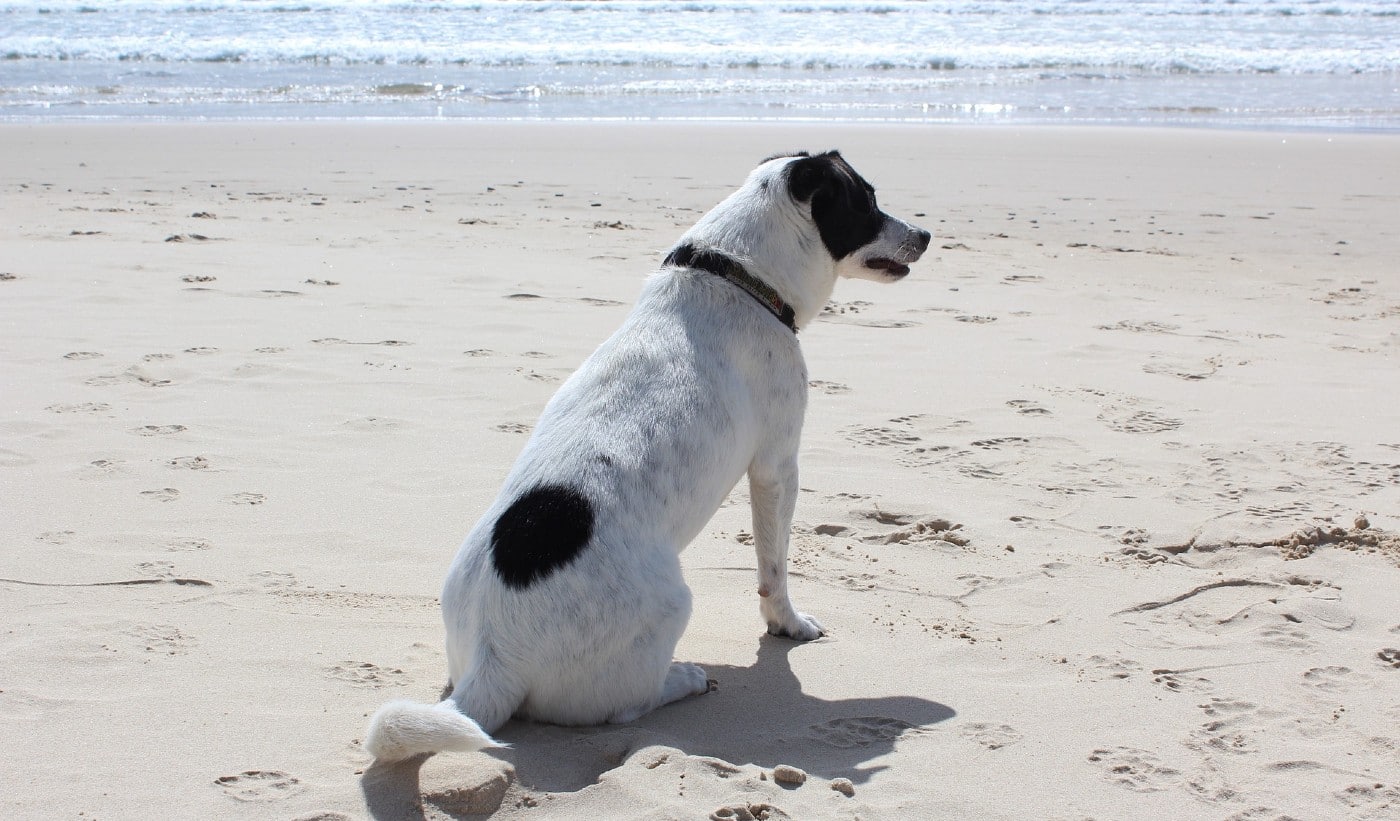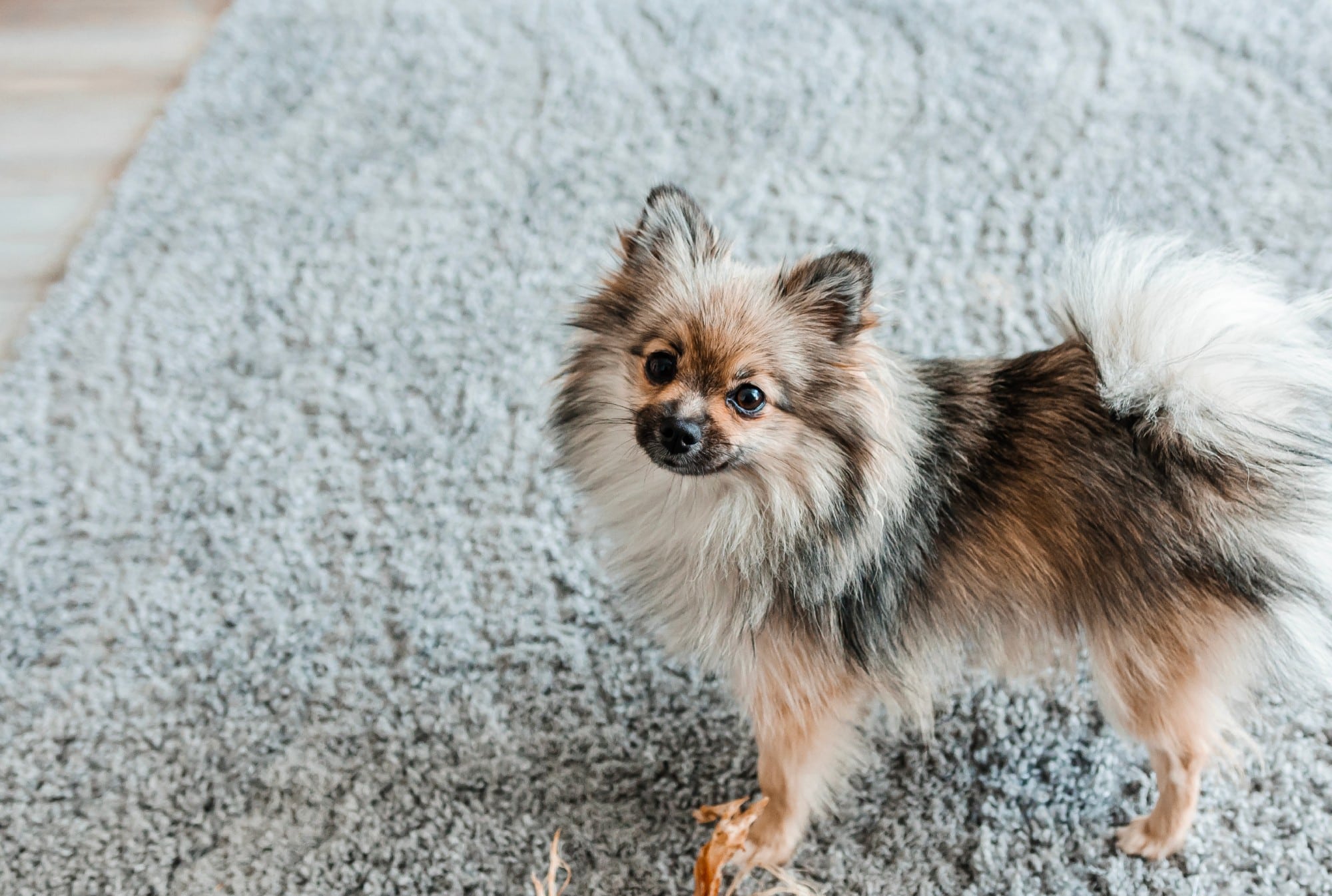As we are beginning to celebrate the warmer weather, our dogs are enjoying spending time outdoors — be it in our yard, on a walk, at the beach or on a hike. But while our dogs love getting outside, it can be dangerous for our furries.
Skin cancer is one of the most common forms of cancer in dogs — and the sun is one cause of it. Even though most dogs are covered with fur, they can still get skin cancer. The key in all cases is early detection. And that takes some understanding of what exactly are the different types of skin cancer in dogs and how to prevent them.
“Genetics is most common cause of skin cancer,” says Dr. Malantus Moore, a veterinarian at Manvel Animal Clinic in Manvel, Texas (a state that knows all too well the power of the sun). For example, he says, Boxers and Boston Terriers are highly susceptible to mast cell tumors, while Bloodhounds and Basset hounds are predisposed to squamous cell carcinoma, which is a solar induced skin cancer. “Other factors including environmental, certain types of virus and hormonal abnormalities, which are all triggers that could cause cancer,” he says.
Related: 6 Ways to Ensure Your Dog Has an Absolute Blast During the Summer
There are several different types of skin cancer that dogs can get, but keep in mind, a lot of the lumps you feel under your dog’s skin are nothing to worry about. According to NC State Veterinary Hospital, 60 to 80 percent of skin tumors in dogs are benign.
Of course, you still have to take your dog to the vet to find out if that bump on your dog’s back is cancerous or not. “The location, signalment and appearance of the lesion helps narrow down the type of skin cancer,” says Dr. Moore.
Types of Skin Cancer in Dogs
Many of the symptoms of these five types of cancers are the same, but some are deadlier than others:
Malignant Melanoma
Malignant Melananoma is a tumor of melanocytes, which are the pigmented cells in the body. Melanomas are not all malignant, but when they are, this type of cancer can be aggressive. Early detection can prevent a malignant melanoma from metastasizing (spreading).
They usually appear as a dark, pigmented lump or mass, but sometimes they can be pink or appear as a flat, wrinkled tumor.
“Malignant melanomas are most commonly found on the lips, mouth and nail beds,” says Dr. Moore. However, they can appear any place on the body that has pigment. Diagnosis is made through blood tests, fine needle aspiration (FNA), x-rays, ultrasound and/or biopsy.
Squamous Cell Carcinoma
Squamous cell carcinoma is a tumor of skin cells in the top layer of the skin. It can occur wherever there are skin cells, including the nail bed, paw pads, abdomen, back, ears or the snout and nose. Light-skinned, hairless or sparsely-haired dogs are more at risk as sun exposure is a factor.
This cancer appears as a firm, raised, sometimes ulcerated lesion. They can grow outward and become large, and sometimes look like a wart. The skin can get dry on the nose and be painful. It generally does not metastasize, but tumors can growl large and destroy the surrounding tissue. Diagnosis is made with a fine needle aspiration (FNA) and/or a biopsy.
Mast Cell Tumors
Mast cell tumors are the most common type of skin cancer in dogs. Mast cells are a type of white blood cell that is part of the immune system. These cells release histamine, the chemical involved in allergic reactions. These tumors are the cancer of those cells. Mast cells are located throughout the body, but a large proportion are found in the skin.
Related: When Taking Your Dog for a Walk, Beware of These Hazards
Mast cell tumors have a variety of appearances, but are often seen as visible, hairless lumps, which can ulcerate and bleed. Diagnosis is usually made through FNA. The tumor is then assigned a grade, which indicates the treatment. Grade 1 tumors often can be cured by complete removal through surgery. Grade 2 requires surgery and often chemotherapy or additional treatment, but it can still be cured. Grade 3 means the cancer has spread, including to internal organs, and even with aggressive treatment, including radiation therapy and chemotherapy which can extend the survival time, the prognosis is only fair.
Other types of skin cancer in dogs
Fibrosarcoma: tumors in the connective tissues of the skin and beneath the skin
Basal Cell Carcinomas: basal cell tumors originate in the deepest layer of the skin
Malignant Tumors of the Skin Glands: tumors in the sebaceous, apocrine, or eccrine glands
Treatment for Skin Cancers
While hearing your dog has skin cancer is scary, if it’s caught early, it’s treatable and often curable. “Prognosis is largely dependent on type of skin cancer and advancement. The pathology report will determine if referral to oncologist is medically necessary,” says Dr. Moore.
Your veterinarian will either do a needle biopsy or remove the tumor for pathology. It may be possible to remove the cancer completely. More advanced cases may require radiation or chemotherapy.
Prevention is the Best Treatment
“The best form of protection is early detection,” says Dr. Moore. “Perform weekly exams at home familiarizing yourself with all of your dog’s lumps and bumps.” If you find something new, or a lump that has grown, make an appointment to have it checked with your veterinarian.
“Limiting sun exposure helps reduce solar induced skin cancers in dogs or cats that are lightly pigmented,” Dr. Moore advises. “Using sun protectants can also help reduce solar induced cancers. Unfortunately, genetic predispositions are unavoidable.”
Related: Yes, Your Dog Needs Sunscreen
Provide your dog with plenty of shade year-round in any place your dog likes to lay out in the sun. Invest in window treatments for your home and car. If your dog is hairless or has very short, light hair, consider dressing your dog in a sun protective shirt.
Since ocular melanoma is often malignant, have your dog try out a pair of Doggles ILS with 100-percent UV protection, for a day at the beach, on a boat or even lounging on the deck on a sunny day.If your dog is hairless or has a white or thin coat, or a light-pigmented nose and eyelids, applying sunscreen made especially for dogs will help prevent sunburn and skin cancer. Test out the sunscreen on a small area first and watch for any allergic reactions. Then apply carefully to skin that’s most exposed to the sun, such as the nose, ears, inner thighs, etc. Dog sunscreen is available in different formulations, including spray, wipes, stick, and balm.
Be careful not to get any sunscreen in the eyes. After applying, as the sunscreen is absorbed, watch your dog to keep him from licking it off. If your dog is in the sun all day, reapply every four to six hours.
Or throw up a beach umbrella and crack open a bottle of dog beer. Be safe and enjoy the summer!
Related: The Doggy Sunscreen I Fell In Love With
This article is for informational purposes only. It is not, nor is it intended to be, a substitute for professional medical advice, diagnosis, or treatment and should never be relied upon for specific medical advice.
We may seem a small commission if you decide to purchase some of the products mentioned.



















